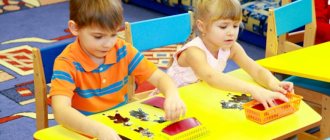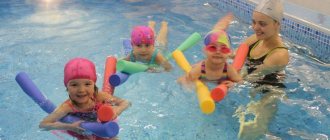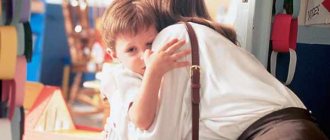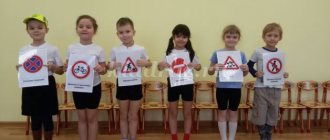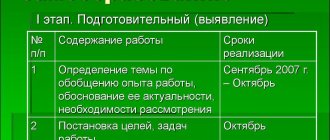Goals of clubs in kindergarten
Club work in a preschool educational institution must comply with the Federal State Educational Standard. At the same time, the goals of the work may vary depending on the specifics of the contingent and the institution. It could be:
- increasing the quantity and quality of primary knowledge, which will allow the child to make an advanced leap in his level of development, as well as compensatory education for children who, for some reason, have developmental delays compared to their peers;
- working with gifted children to provide them with the opportunity to gain knowledge, skills and abilities that are not included in the standard program approved by the state;
- acquisition of knowledge, skills, development of skills in such areas as interpersonal communications, self-knowledge, self-regulation, self-development.
The functionality of the circles also follows from these goals:
- every child gets the opportunity to acquire new knowledge, practice skills and abilities in the area that interests him;
- with the help of circle work, the level of social adaptation of the child increases, his experience of interaction with peers and adults is enriched, children undergo the first school of self-affirmation and the test of a “success situation”;
- additional classes help improve the level of children’s existing abilities, and also have a corrective effect on some deviations;
- The actual methodological features of circle work favor the development of communication skills and personal qualities with increased social demand.
Organization of studios and clubs for children
The circle should unite children creatively and informally, focusing on their common interests. Consequently, the organization of the work of studios and clubs for children in terms of the Federal State Educational Standard should fully meet two points:
- The priority is the interests of children and their parents. You can find out the wishes of parents in a private conversation, at a parent meeting, or during personal consultations;
- The material that is the basis for building circle work goes beyond the state standard for preschool education; accordingly, this activity is additional children’s education.
To understand what legal documents will govern the circle, get an idea of:
- Charter
- Educational program
- Regulations on the mug
- Mug program
- Annual work plan
- List of children in the group
- Class schedule
- Materials on the effectiveness of the circle’s work (diagnostic cards).
Sample Regulations on the organization of additional education
Sample agreement on the provision of paid educational services src=»https://www.resobr.ru/images/63131/1.PNG» class=»aligncenter» width=»596″ height=»254″[/img]
Download the contract
If you are a teacher, you need to create a circle and organize its work, do the following:
- Study the regulatory framework;
- Establish the needs for additional services that the institution itself, children and parents have;
- Analyze how effectively children are mastering the state CE program;
- Develop your own or select a circle program by analogy;
- Develop an annual work plan;
- Approve the finished program and plan from the head of the preschool educational institution;
- Put your plans into practice;
- Analyze what results your activities brought;
- Present these results to parents and colleagues.
Do not forget also that children’s participation in clubs is purely voluntary. Under no circumstances should the teacher use any forms of coercion and manipulation to persuade the child to engage in work. You should also pay attention to the following related factors:
- The workspace must be properly organized, the environment must be comfortable and conducive to creativity;
- Children should have the freedom to choose to do in a circle what they like and are able to do, including this applies to children’s characteristics depending on age and experience in participating in similar activities;
- Educational and educational tasks implemented in the process of conducting a circle should not conflict with the main program of the kindergarten;
- The main activity should be play. On its basis, it is necessary to build the content of additional education;
- It is imperative to take into account the standards regulating the load on the child.
Hire additional education teachers or delegate this responsibility to full-time specialists. Preschool teachers can work as additional education teachers if their qualifications allow them. In this case, make changes to their job descriptions.
Download instructions
Circles in kindergarten: types
Most children attend at least one club in kindergarten. There are often more of them - parents are given a wide choice in this matter. The conduct of multidirectional thematic circles by preschool teachers is determined by the requirements of the Federal State Educational Standard related to the approach to educational processes in kindergartens. The education standard talks about the importance of both basic and additional education for the development of a child. As a result, circle work in different age groups has become a variable section of the educational program, which is formed by participants in the educational process. Regardless of the direction to which the circle belongs, its organization and functioning have general principles that must be followed.
Despite the wide variety in the names of circles in kindergarten, in general all work in this direction can be divided into four main types:
- cognitive development - results in satisfying the interests of children, their desire to try and learn something new;
- development in the artistic and aesthetic field - allows children to exercise their creative abilities;
- physical development - makes it possible to understand the basics and begin to follow a healthy lifestyle, gain physical activity skills;
- development in social and personal areas - implements adaptation skills in society, helps to train communication skills.
